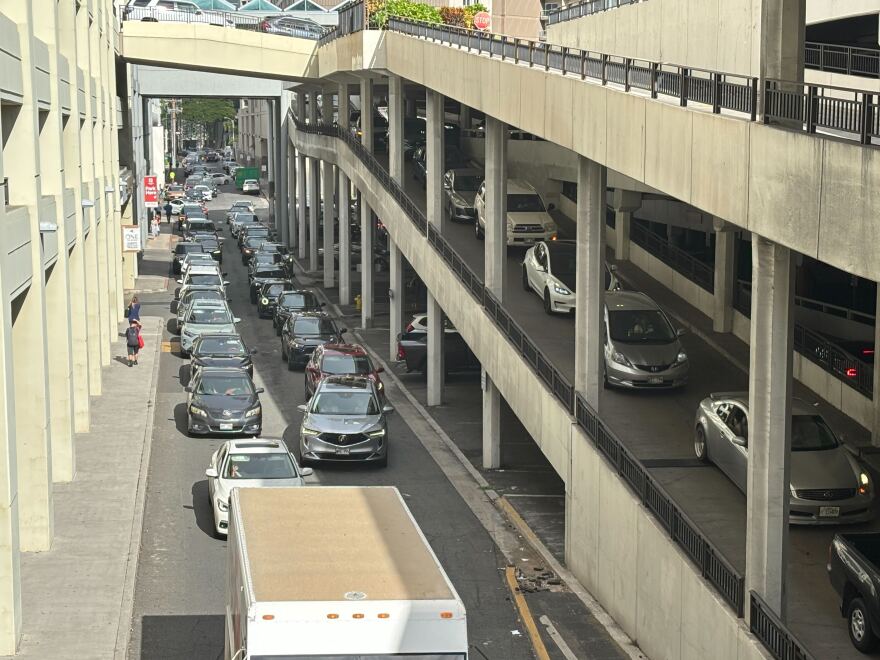This morning Hurricane Kiko is weakening and is projected to bypass the islands this week. Emergency management and state and county officials have been focused on the storm following the tsunami scare created by the earthquake in Russia's Kamchatka peninsula.
We spoke to Karl Kim, head of the Pacific Urban Resilience Lab at the University of Hawaiʻi at Mānoa, about how past threats inform the future of natural disaster planning.
Interview highlights
On understanding tsunamis
KARL KIM: We need more equipment and data in the field for detecting earthquakes and tsunamis, for modeling not just the generation of a tsunami, but the propagation of the wave. And we have limited sensors and we need more. We need to invest more in that so that we know more and earlier, and improve the forecast and estimates of the wave heights and the inundation and it's quite complicated because there are many factors that can affect a tsunami wave. And then the the potential for flooding conditions, like whether we're at high tide or low tide, and then the elevations, where the development is. This was a wake up call that we need to invest more in the science of tsunami modeling, but also coastal flooding as well, too. ... I'm saying the United States, the state of Hawaiʻi, our community, needs to invest more in understanding not just the physical science, what generates the tsunami and how the waves will propagate, but really the flooding that could potentially result from that. And we need to improve the forecast, the estimates of what areas will be flooded and how great the flooding would be, and then tie that to things like evacuation and sheltering as well.

On evacuation challenges
KIM: One of the challenges with evacuation, I think it's how people will respond to the evacuation orders. Some people will ignore it. Some people will delay in terms of the decision making. Other people will evacuate when they don't really need to. They are in a safe location, but for a variety of reasons, they will choose to evacuate. So part of what we have to do is to understand the behavioral aspects of evacuation. What we do know is that oftentimes, there are many factors that go into the decision to evacuate. Many times, people are concerned about their family or their children or older adults, and they want to take care of them. It isn't just about saving yourself or what you want to do. Another problem with evacuation is the vast majority of people travel by automobile, by private vehicle, and we should be also exploring pedestrian evacuation, bicycle evacuation, shelter in place rather than necessarily evacuating by vehicle. But vehicles are important. … And so you understand why an evacuation order can generate lots of traffic, traffic demand and travel.

On gathering data on transportation, capacity
KIM: There's a variety of different sources of data that we're using, social media posts, data from cell phone companies, other sources of information can be used to corroborate what we saw and observed on that day. And so somehow we have to do a better job of coordinating between the official sources of data and other sources that we can compile to show because this is a challenging problem to get data and information in terms of the levels of congestion and where people were going and traveling, and what could be done to relieve the congestion to avoid this. Because I think this was a very harsh wake up call that had this been a locally generated tsunami, or had this been when school was in session, things could have been a lot worse. There could have been people caught, really, in the hazard zone with further delay.
On developing more planning efforts
KIM: I think we all have to develop plans. I think we have individuals, households, families, businesses, organizations, institutions that should develop plans. And one of the things that we do is we know that many people are concerned and trying to take care of their children or older adults. I am particularly concerned about persons with disabilities, older adults, people who have difficulty moving during good times. And I think more attention needs to go to paratransit operations, to care homes and where others that are in the evacuation zone and ensuring that they are not left behind, or they can evacuate when an order is given. We saw that in the Lahaina disaster, where a majority of the fatalities were older adults, persons with disabilities or access and functional needs, and coming up with community-based strategies for ensuring that they're evacuated when an evacuation order is issued. I think we have to look at multiple hazards and threats, right? And it's not just the earthquake or the tsunami, but it's the remoteness that we need to really consider the range of different factors that can harm people as well, too. We have limited mutual aid or assistance from supporting jurisdictions because we are the most remote place on the planet, and we need to work to build local capacity to manage these neighborhood capacities. And I think the efforts that the state is undertaking to try to build more resilience at the community level is the way to go. That's among the lessons that I think we take from [Hurricane] Katrina and from other disasters that we need to have more community engagement, community participation and community ownership of these problems and to manage not just the evacuation, but also taking care of people before, during and after these events strike.
Read Kim's report on Honolulu Civil Beat here.
This story aired on The Conversation on Sept. 8, 2025. The Conversation airs weekdays at 11 a.m. Hannah Kaʻiulani Coburn adapted this interview for the web.




